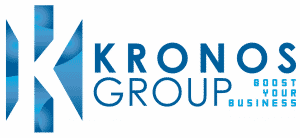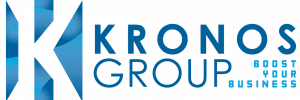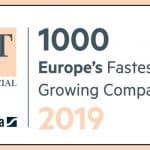Mitigating rising inflation and commodity price volatility in Europe through the transformation of procurement services

Summary
Inflation and the increasing price of goods and services have become crises not just in Europe but the world at large.
From the scarcity of skilled labour to drastic changes in trade policies, the procurement landscape is affected by significant global trends.
While remaining optimistic about a change in the business environment may not be an option, businesses must take the necessary steps to ensure resilience during these volatile times.
By creating transparency and implementing immediate actions businesses are able to analyse the impact of inflation and rising commodity prices through a transparent operating model.
Advanced solutions to mitigate inflation and price increases through antifragility offer some of the most practical solutions for businesses to actively adopt measures to create a more crisis-ready business framework.
A more future-focused approach by building an infrastructure that can absorb future uncertainty can help businesses identify and prepare for potential threats that could cause more internal volatility.
——————————————————————————————————————-
Leaders in procurement are facing some of the toughest market conditions today across Europe and the world.
Macroeconomic factors like workforce limitations and trade policy shifts have created a landscape where long-term trends that have benefitted the global economy are gradually being upended.
Before the pandemic, procurement businesses were thriving with declining expenditure and increasing productivity through globalised supply chain systems.
Increasing inflation and the scarcity of supplies have made the shortcomings of existing procurement operating models more apparent. Limited insight into suppliers, a lack of reliable long-term planning, the absence of collaboration across functional teams, and the inability to adopt technology have all contributed to the collapse of supply chains around the world.
Organisations have started devising new strategies and executing them after years of continuous challenges. But this means higher investments in time and resources dedicated to revitalising and restructuring supply chains and discovering how best to create a more antifragile business structure through procurement transformation services.
Building a roadmap based on the lessons learned over the past years is perhaps the most impactful way organisations can drive a procurement-centred strategy with cross-functional teams in response to fragile market conditions.
Fostering transparency and effectuating swift actions
The first order of business for any contemporary company is to quantify the impact of rising inflation and increasing prices.
Organisations must assess these impacts by mobilising cross-functional teams whose sole purpose is to identify and improve financial margins at all levels.
Leveraging advanced tools for analysis and empowering procurement leaders to make evidence-backed, swift decisions are just a few of the industry best practices concerning the transformation of procurement that have emerged.
Organisations must also be vigilant in ensuring that these best practices are comprehensive enough to meet organisational goals. If the measures put in place threaten to diminish transparency and innovation—critical factors for mitigating volatility in today’s market—it is vital that steps are taken to optimise these measures for more balanced success.
When evaluating an organisation’s transparency it is important to ensure that the cost inflation information pertaining to geography and category is accounted for. In order to fully comprehend and appreciate these insights, procurement teams must have a comprehensive understanding of the relevant economic drivers.
Advanced solutions to mitigate inflation and price increases through antifragility
To mitigate these risks, companies have the option of implementing a number of alternative solutions to create a more robust supply chain.
Accessing suppliers with different cost structures in new regions is a solution that many leading businesses are turning to during these times.
Using the transformation of procurement services and tools, businesses are also building new ways of analysing supplier economics for more innovative contract modelling. These tools are also powerful in helping companies develop insights into the supply chain.
Businesses are also looking inward for possible solutions to rising costs. Looking to relieve pressure on their bottom line, businesses are reducing the total cost of ownership (TCO) by making certain design and innovation specifications that help bring down total costs without adversely impacting quality.
Digital transformations are also making a significant impact as procurement leaders come to terms with the importance of having an up-to-date system and process that sustainably brings down costs in the long term.
Building dependable infrastructure to manage future uncertainty
Market indicators suggest that many challenges we face today are likely to continue into the foreseeable future. This means that labour shortages, commodity pricing, inflation, and other volatile elements are long-term challenges that businesses must learn to push through.
Procurement leaders must navigate this uncertain landscape by managing risk, fostering antifragility, and generating higher value.
The next step in the transformation of procurement services is to establish a new operating model that is capable of identifying new ways of working and establishing processes and solutions that can sustain organisation-wide antifragility.
Procurement teams must be prepared through specific procurement training to mitigate emerging concerns while focusing on building advanced and sustained capabilities that are embedded into new operating models while moving forward.
There are also companies that have begun creating agile teams whose primary focus is on advanced analytics to promote a cross-functional approach to cost management, increasing profit margins.
Transformation of procurement services is a necessity in today’s volatile markets
The value of procurement is undeniable for organisations.
Procurement leaders must become strategic partners working alongside C-suite executives and move away from limiting their role to overseeing the key purchasing function of their organisation.
Procurement’s knowledge of the supply chain and the supplier market must help guide cross-functional teams in creating long-term value and driving the overall success of the business.
While transformations of this magnitude are rarely simple and often require expert knowledge of industry best practices, businesses can implement key changes to their existing supply chain processes and mitigate rising risks for a more favourable outlook.




